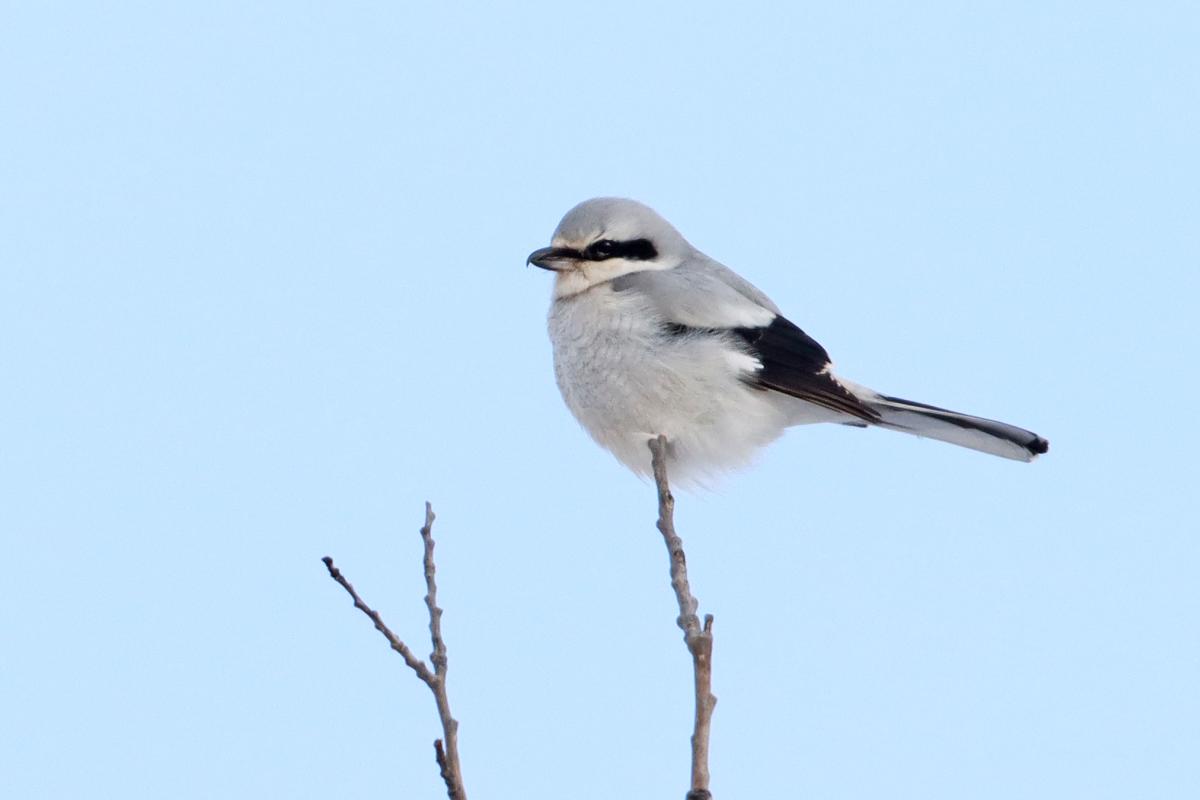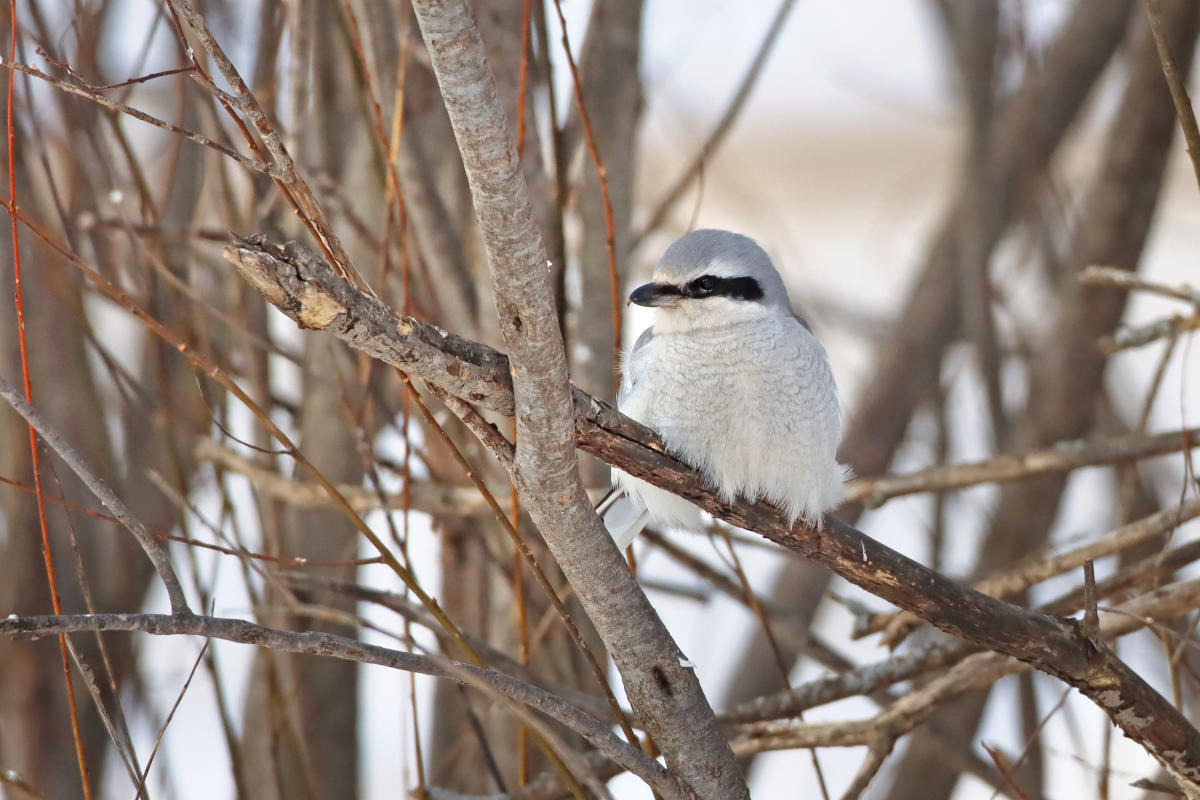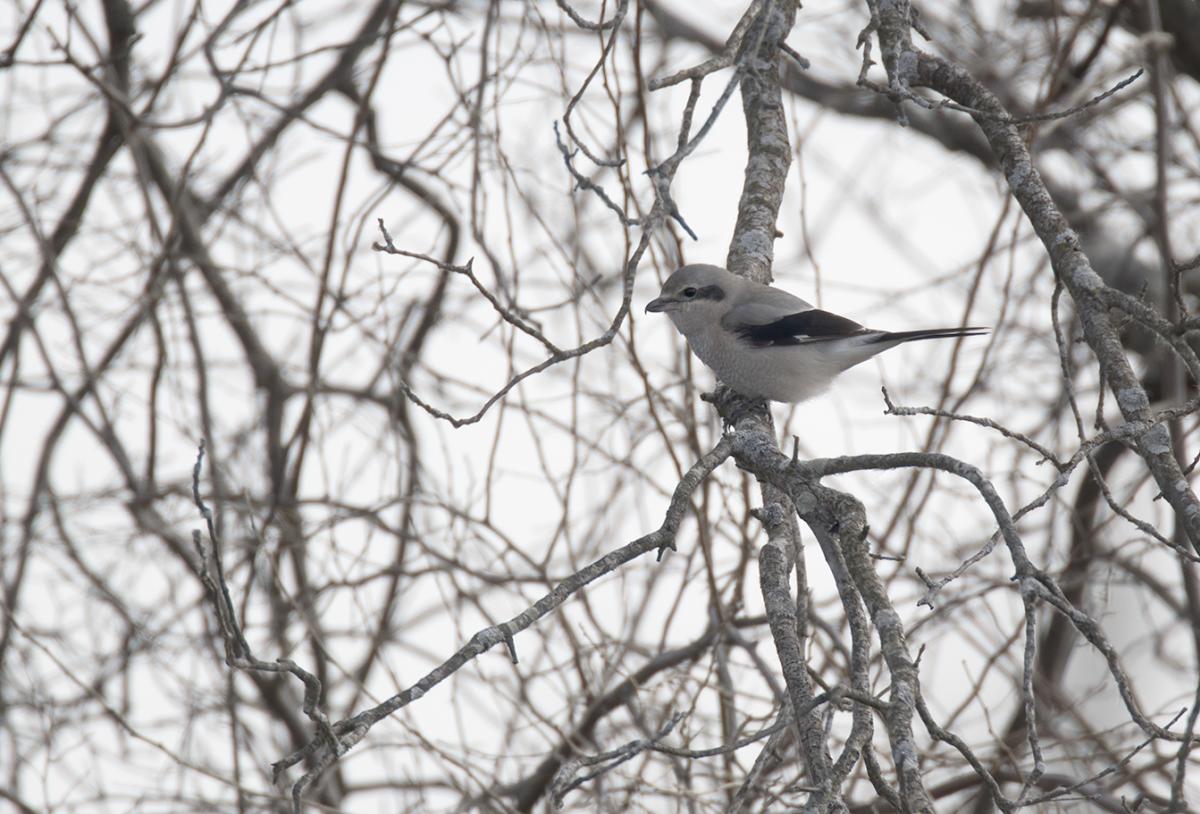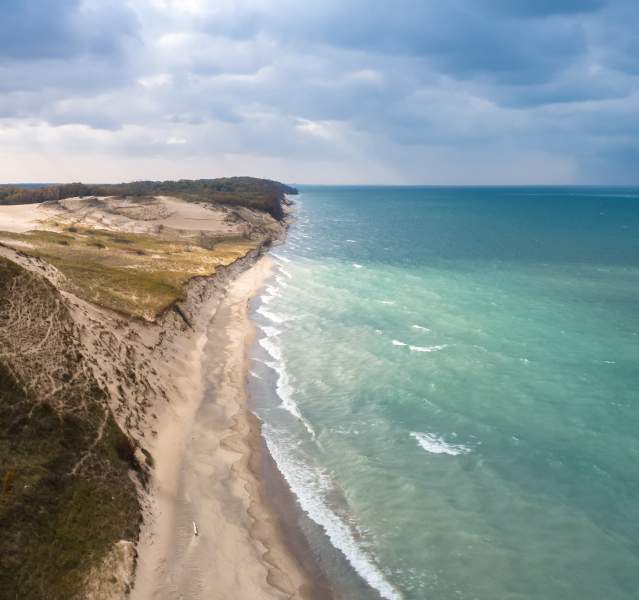Well, shucks, try as I might, I have not yet been successful in seeing a northern shrike at Kankakee Sands. Even though more than 450 beautiful bird species have been documented in Indiana over the years, this winter, I had my sights set on just one—the clever northern shrike.
Classified as a songbird, this ten-inch grey above and black below cutie with a long black tail and black eye stripe is unique among songbirds in that it does not eat seeds. It is strictly carnivorous. The northern shrike’s wingspan is just 14.5 inches, it only weighs about as much as two AA batteries, and yet it dines on things that try to run, slither and fly away.

Also called butcher birds, shrikes perch on fences, wires, and high in the tree tops where they can scan the open landscape and hunt. They are able to hover, dive, run down, and can even catch a bird on the wing. All this from a robin-sized bird! Once they have caught their grasshopper, bee, lizard, snake, mouse, vole, or small bird, pop!-- they impale their dinner on a thorn, spike of barbed wire or another sharp object to eat immediately or possibly even save for later.

I’ve always thought it was good fun eating food off of a toothpick or a spear - cheese, olives, shish kebabs, marshmallows, etc. But for the shrikes, eating food off of a spike is a necessity. Shrikes are carnivorous but small in size and have feet that are adapted to perching, not killing. They lack the large strong talons like those of hawks, with sharp killing claws on the tips of their toes.
But what shrikes don’t have on the south end, they have in abundance on the north end. They have a very sharp, strong, hooked bill capable of killing their prey swiftly, and they have the brains to have figured out that thorns, spines, and spikes are an ingenious way of securing and controlling their prey and also means for stashing food for later when the hunting may be less profitable.

Northern shrikes breed in the summer in spruce woods in northern Canada and Alaska but migrate southward in the winter to the northern U.S. and southern Canada provinces, in prairies, meadows, and pastures that have scattered bushes and trees from which they can hunt. The number of northern shrikes on our planet is estimated to be fairly stable at this time, but the numbers are at risk of decline due to human actions which threaten their summer breeding grounds in Canada and Alaska - oil drilling, timber harvest, and mining as well as forest fires and climate change.

During winter months, northern shrikes have been seen at Willow Slough Fish and Wildlife Area, LaSalle Fish and Wildlife Area, Beaver Lake Nature Preserve, and most recently at Kankakee Sands at our Bison Viewing Area. It’s exciting to have positive sightings of the northern shrike at all these locations because it means that the shrikes see this area as an uninterrupted landscape of opportunity for winter residing. No matter the ownership, the wildlife see these natural areas as one continuous landscape that they can call home.

Unfortunately, for folks like me who really, really want to see one, northern shrikes are solitary birds, rarely seen in groups which makes them harder to find. However, on the lucky side, shrikes are territorial, even when not on breeding grounds. So once you know that one has been seen in an area, you can often return to that area and quietly wait.

I am a notoriously bad birder. I seem to always be in the wrong place at the right time and the right place at the wrong time. Despite returning to locations where the northern shrikes have been spotted, I have yet to see one.
My birder friend tells me that we just need to keep our eyes open for the northern shrike, and someday we’ll see it. I trust she is right. But, even if we don’t see a northern shrike, we’ll be sure to see many other beautiful birds and wintertime scenes while trying, right?
The Nature Conservancy’s Kankakee Sands is an 8,300-acre prairie and savanna habitat in Northwest Indiana, open every day of the year for public enjoyment. For more information about Kankakee Sands, visit www.nature.org/KankakeeSands or call the office at 219-285-2184.

